Last year I was very grateful to receive the chance to complete two works for a lovely lady named Therese in Oregon. She was interested in two of my previous works. This gave an ample chance to approach some old work and build upon them. I think this is quite a unique part of creating art. Looking back at where you started on previous works can take you back to another time, and it is rare that a chance arises to create the work again in a new light. I shall do two posts for each of the commissions, this one shall focus on the Dove.
A word from Therese, the commissioner
“I can't remember a time when my life was not enriched or blessed by art and the artists who are so faithful to their calling. This covers a full spectrum: painters, sculptors, poets, luthiers.
About the dove in particular, in substance and in symbol, so many reasons! Of course, the baptism we read about in the Gospels, and more. Columba, the dove of Iona. The doves at St. Claire's hermitage in Assisi. The way both doves and ravens interact and alight here in Mount Angel.
When I saw the gallery photo of the tranquil dove Ewan had carved earlier, how could I not reach out? “
The first commission was for a Resting Dove, this was based on a piece that I made for my partner for her birthday back in 2021. I saw this wonderful stone carving of a dove in the Pitt Rivers, a historical/anthropological museum based in Oxford. It was collected by the museum in 1906. It has an air of mystery around it, with an unknown origin and date.
I found this piece to be incredibly serene and very beautiful in it’s simplicity. If it was a song, the melody would be soft and resonate. The symbolism of the dove is vast, not just in Christianity but in other religions also. It has it’s place as a sacred bird. Animals of course have many instances within scripture. We can read the words and grasp their meaning through the nature of an animal.
“See, I am sending you out like sheep into the midst of wolves; so be wise as serpents and innocent as doves”. (Matthew 10:16).
“Oh that I had wings like a dove!
For then would I fly away, and be at rest.”
(Psalm 55:6).
“O my dove, in the clefts of the rock,
in the covert of the cliff,
let me see your face,
let me hear your voice;
for your voice is sweet,
and your face is lovely.”
(Song of Songs 2:14).
Of course, most known is the dove ascending as the Holy Spirit during Christ’s baptism. A divine mystery expressed in the poetry of a dove. Perhaps the animal is a way of God expressing His wisdom unto us, there is a lot to learn from them. I have always had a soft spot for birds.
For the new piece, I wanted to capture the same qualities of this resting dove, mostly the quiet stillness of it. I set to drawing, and came up with an initial template to guide the carvings first steps. All art starts with drawing, the sketch can work quickly or slowly, all thoughts towards the piece are directed by the pencil initially. A core part of drawing is observation, it is an ability to look and seek to understand, distilling the object and capturing something truthful about it on paper. It is the best way for working things out.
Carving as a practice has two main disciplines, one is direct carving and the other is carving from a model. Direct carving is often associated with medieval works, where chisel goes direct to stone without a reference point other than a drawing, and sometimes without. The other is working from a pre-existing work, a clay model or plaster cast, and then using a pointing machine to get a very accurate copy of the model created in stone.
The pointing machine allows pin point reference, so you know the exact depth and distances that need to be carved to allow a perfect reproduction. The eye can often deceive, especially when judging curves. This tool is ideal for the craft of stone cutting, in a skilled hand they can reproduce any three dimensional shape to near enough exact detail. I have never learned how to use one of these machines, as a chance never arose, and I suppose there is a hesitancy within me that thinks copying directly is stale. This can be seen in iconographic works, where copying is at the heart of their creations, yet more often than not, perfect copies leads to a rather lifeless imitation of past work. Direct carving is my favoured technique, it allows a certain freedom to carving where you are not restricted by perfect accuracy. It allows response to the material and the forms to be carved. When it came to this dove, I had the drawing for reference and then the response to the forms in front of me.
This is the exciting part, it is the transformation process beginning. Taking a tree trunk and slowly revealing something that could exist within it. This is a piece of Ash, that was found just down the road from my parents house, tree surgeons can be very kind in offering wood! It starts with the axe and adze, this is a rather brutal act, which involves lots of hacking to remove the mass.
Once the weight of the block has been reduced, the chisels come out and so begins the gradual refinement process.
In carving, it is most important not to focus on detail but to focus on form, the initial stage is making sure the mass is right. Sculpture as a means of making is an unveiling rather than an emerging, from the blank canvas a painting arises, from the block of wood a form is revealed. The body and tail of the dove are a bit like an almond shape. I fondly remember a teacher I used to have who was a larger than life French man, with a wonderfully strong accent. He would he look at a carving and say ‘Ah, now this looks like a big wheel of cheese, and these parts, like tiny sausages!’. I often turn to the shapes of food for qualities of form.
Once the form has been correctly established, the detail gradually begins to settle, and the more defining marks can be made. I found myself returning to the almond shape continuously in this piece, the top of the head, the wings and the eyes all have a tapered point. I think this expresses well the harmonious quality I was looking for.
With the finishing, I file and sand the surface, sometimes the chisel marks can become a feature of the carving, this often looks a bit too rustic to my personal tastes. I think the surface of wood smoothed can hold light exceptionally well. Three dimensional work is finding the right balance of light and shadow.


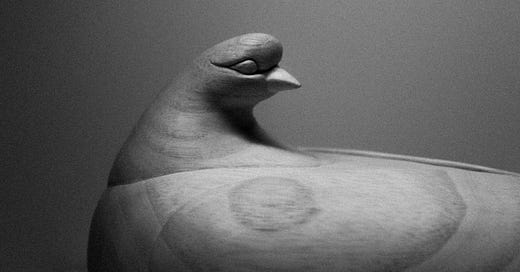




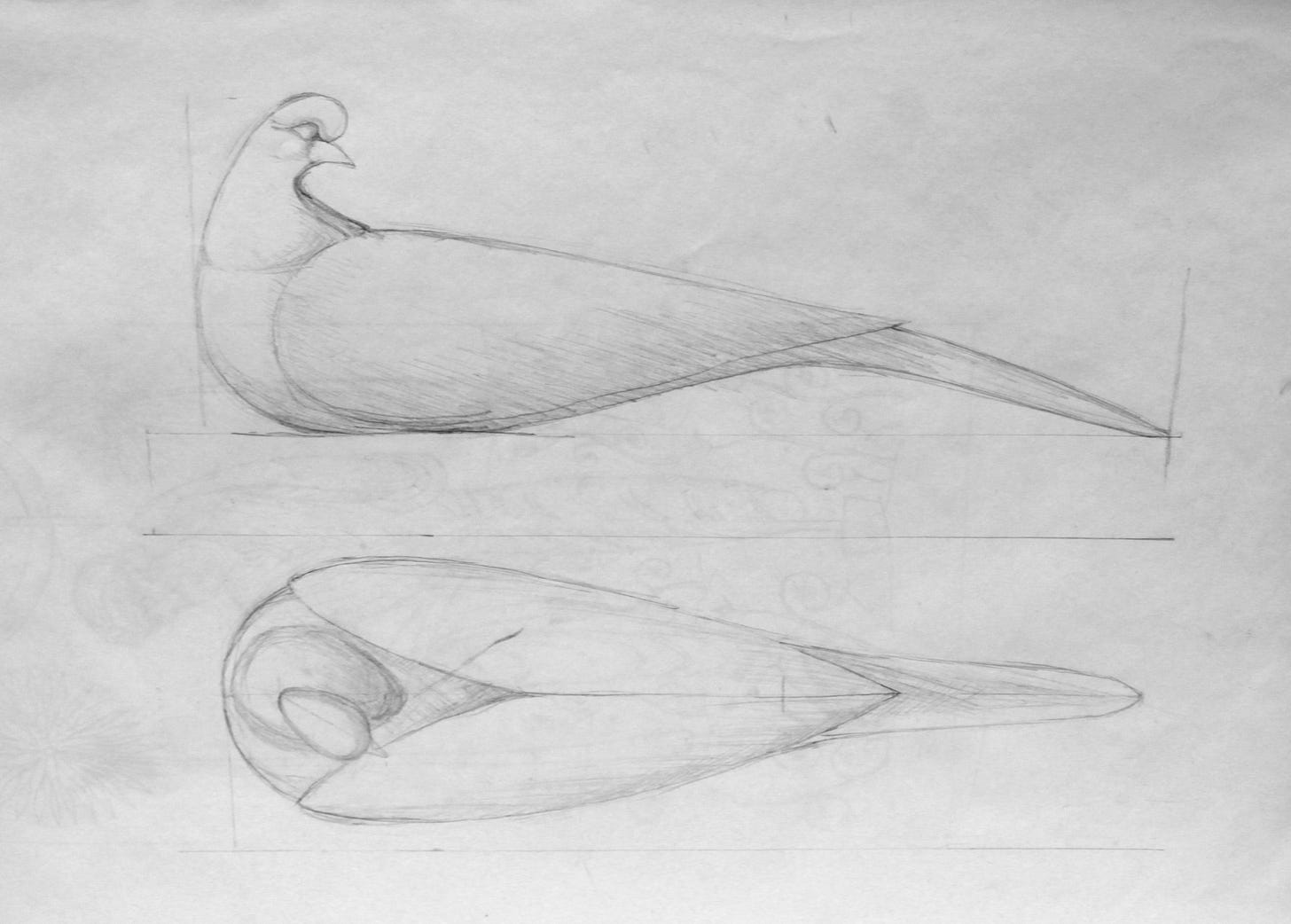

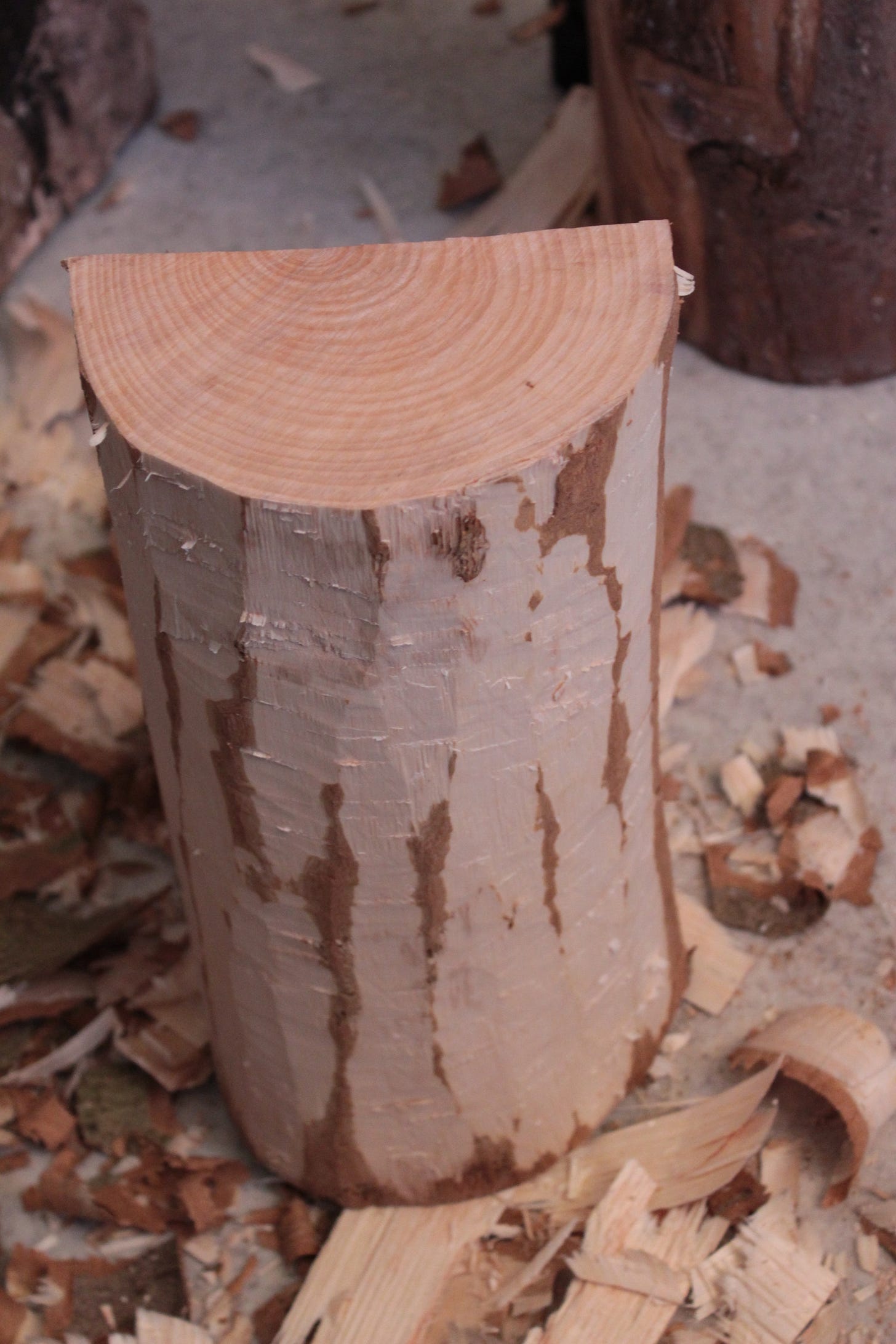


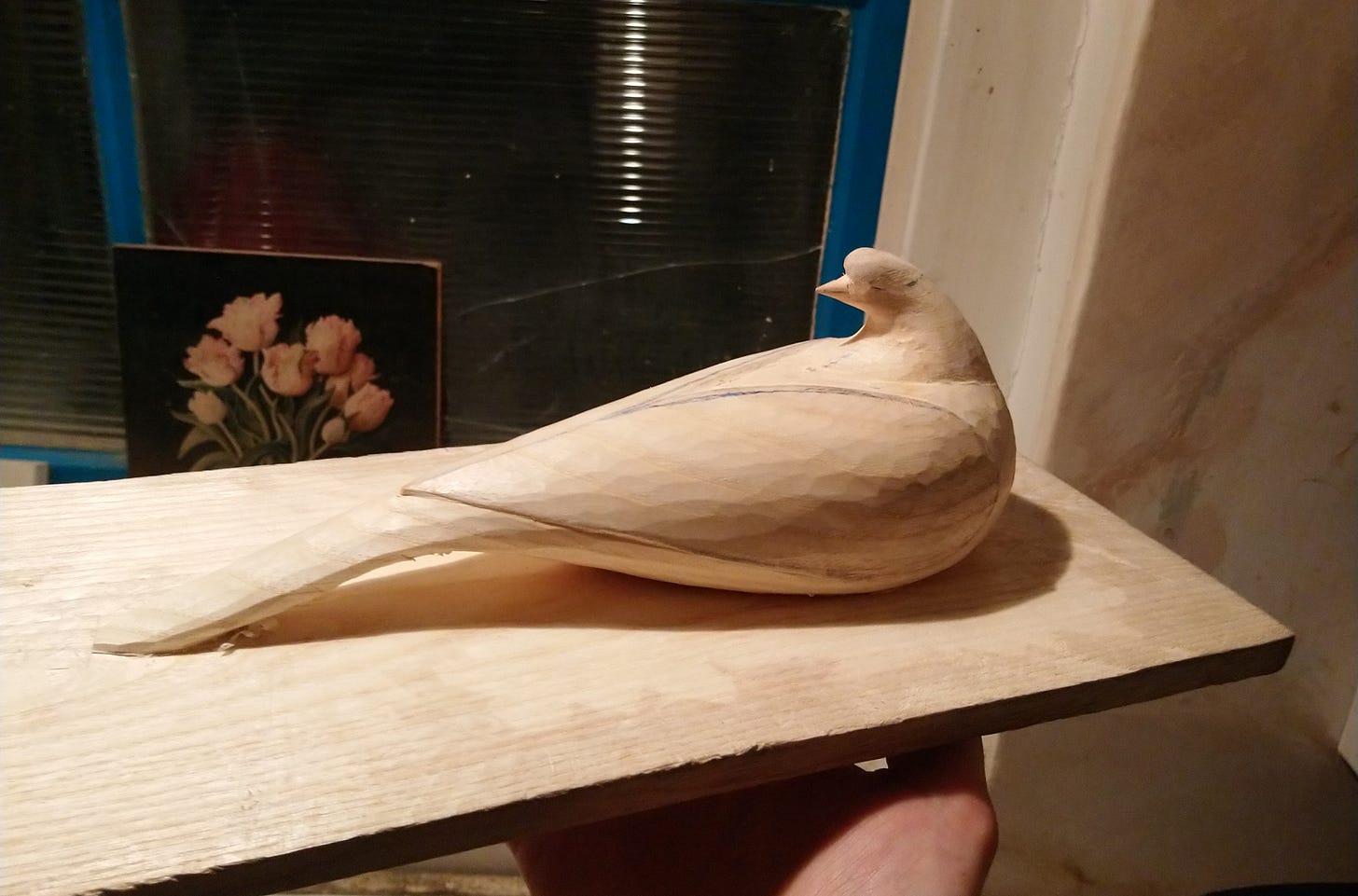

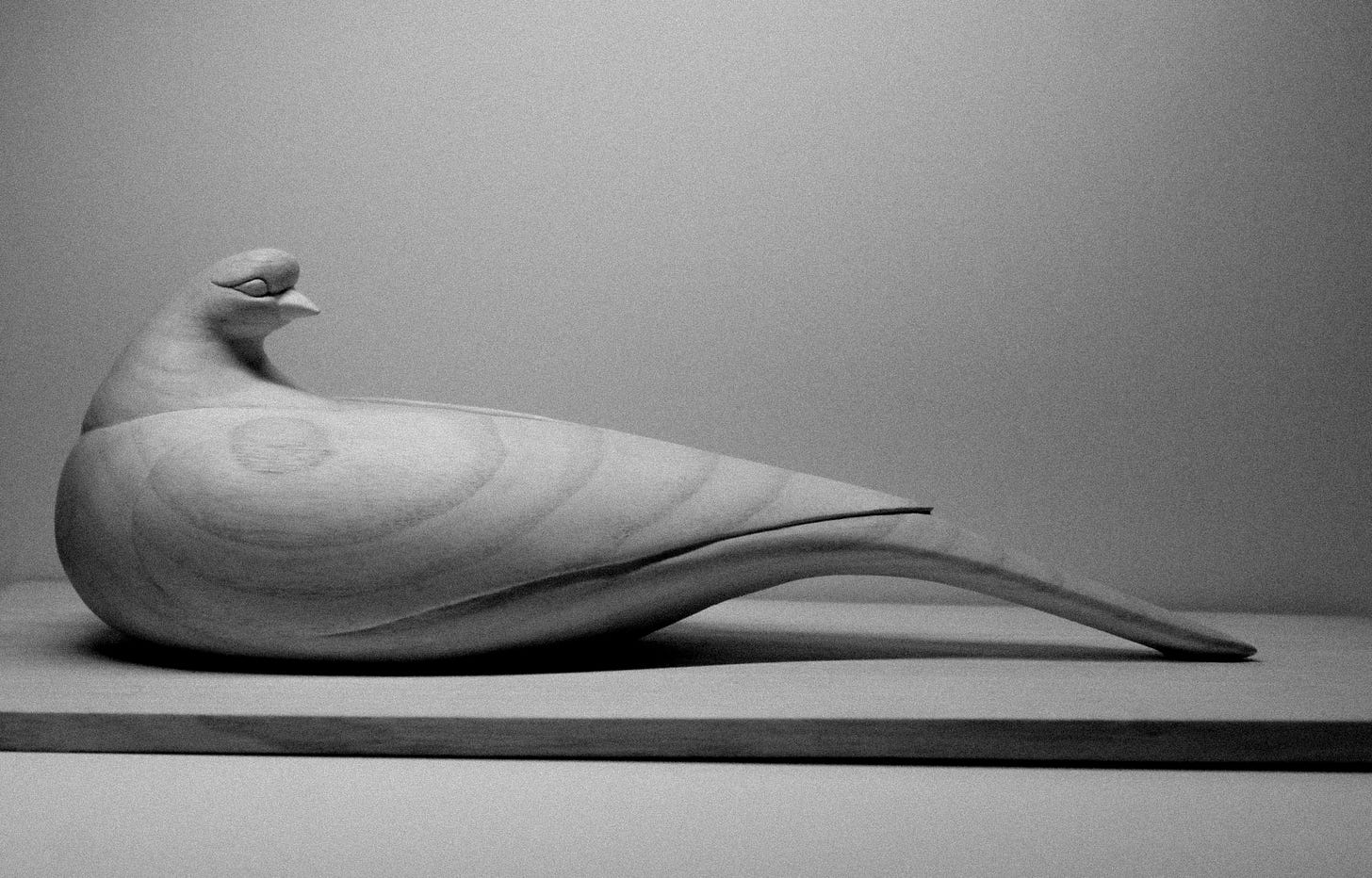

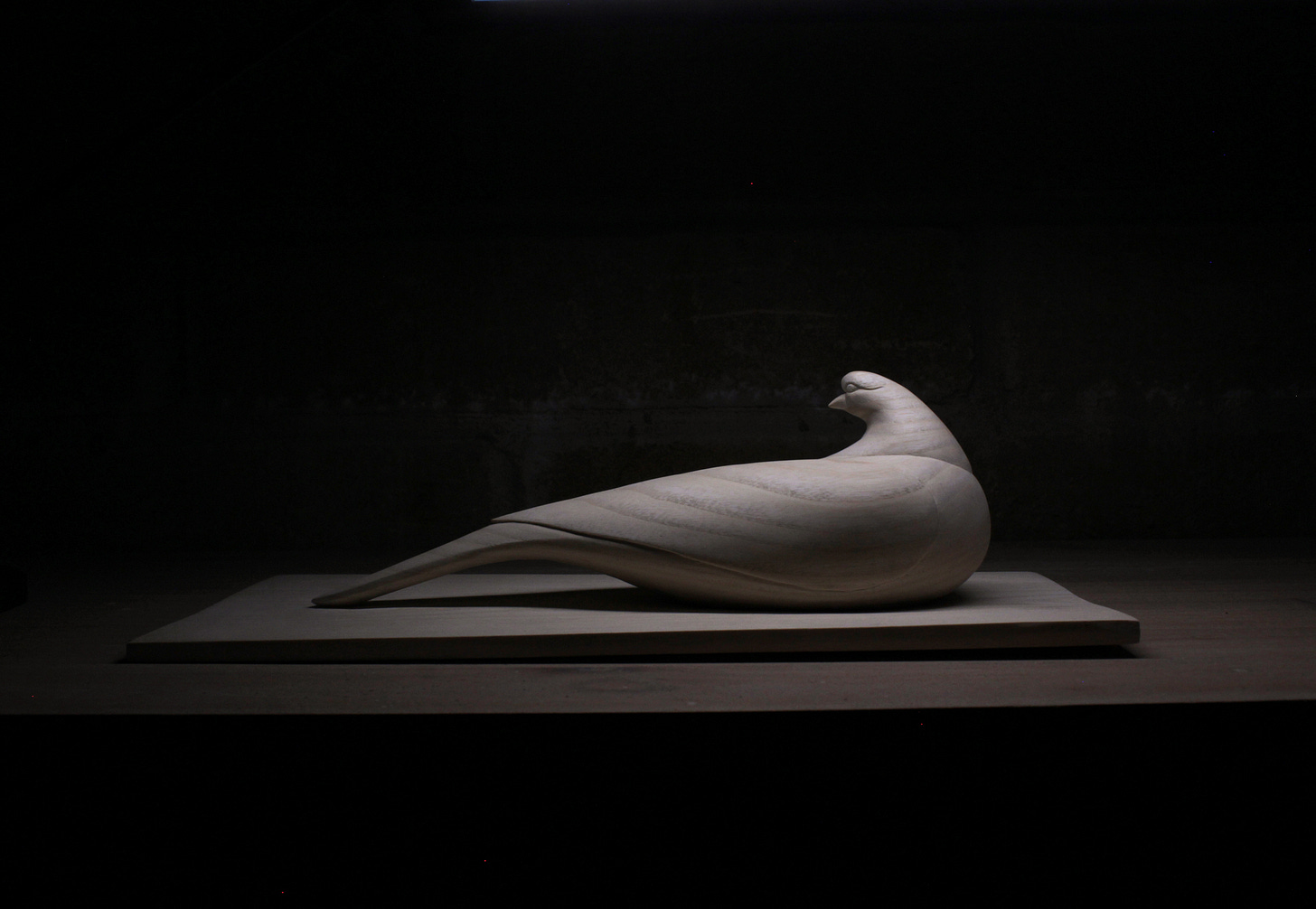
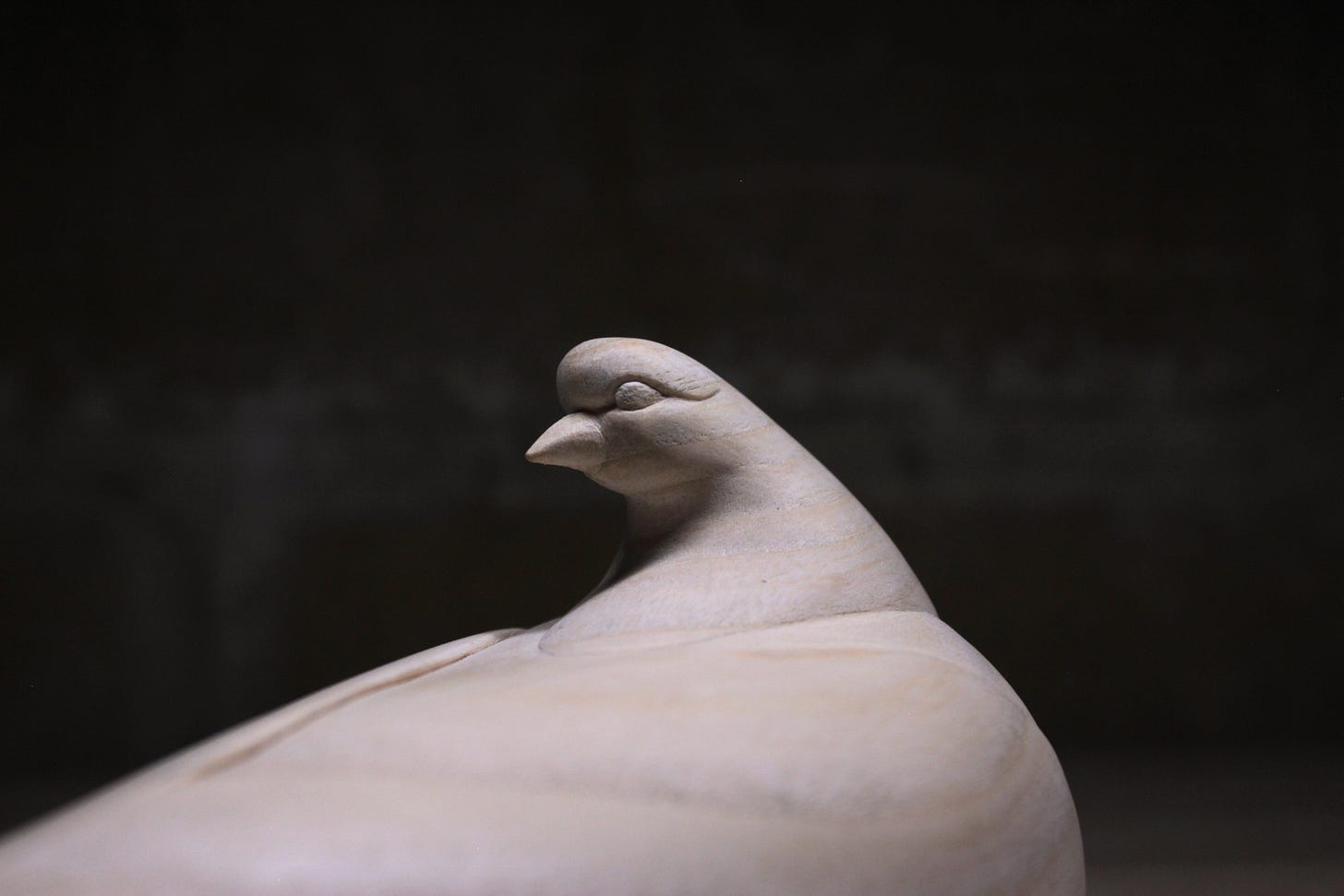

Beautiful.